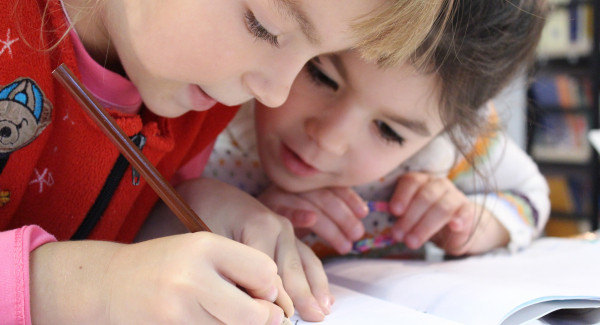Imagine you are walking around the city center. It is a warm summer evening and the street is deserted, no children or cars are around. The pedestrian light to cross the street is red. What do you do? Keep waiting for the light to turn green or just cross? And why? Because it is your own free choice?
If you decided to ignore the red light and cross the street, you just broke what is called a social norm. Social norms help us to effectively respond to social situations. Not only do they help coordinate road users to safely cross the street, but they also tell us what ‘appropriate’ behavior is and what is not in an elevator or in the office. Social norms help us to regulate our behavior in unclear or ambiguous situations and they exist in all societies around the world (Cialdini, 2001; Cialdini & Goldstein, 2004).
New research, however, suggests that the likelihood that you place a strong emphasis on adhering to social norms and keep waiting for the light to turn green is profoundly influenced by the population density in your home country and the amount of wars and natural disasters that your country has been exposed to in its recent past. A team of researchers, led by Michele Gelfand at the University of Maryland, recently found that there are systematic and predictable cultural differences with regard to the emphasis that is placed on norm adherence in 33 different societies around the world (Gelfand et al., 2011). Cultures that have experienced higher levels of threat and in which people live in more densely populated environments place stronger emphasis on adherence to social norms. The evolutionary explanation for this relationship is that in order for a society to defend itself against territorial threat, protect from resource scarcity and coordinate itself in the face of natural disasters, it has to enhance order and social coordination (Gelfand et al., 2011). The relative strength of social norms on individual behavior in which societies differ has been termed cultural 'tightness'. When norms are weaker, this is called 'looseness'.
Gelfand’s study included countries as diverse as Pakistan, Brazil, Germany, the United Kingdom, Singapore, and Japan. People in each country indicated their agreement with six statements referring to the perceived strength of social norms in their country. For example, “In this country, there are very clear expectations for how people should act in most situations.” or “People agree upon what behaviors are appropriate versus inappropriate in most situations in this country.” Additionally, they were asked to rate the appropriateness of 12 behaviors across 15 situations. For example, they indicated whether or not they found it appropriate to 'eat in a bank', 'talk in a library', and 'kiss in an elevator'. The kinds of situations that were included ranged from settings that have a high degree of ‘situational strength’ (i.e., that are relatively strong in all countries in the sense that only a limited number of behaviors is appropriate here in any country, such as the library, elevator, job interview and at a funeral) to situations that have a lower degree of situational strength (i.e., weak situations that allow a wider range of behavior, such as in a public park, your own bedroom and on the bus).
Interestingly, people within all countries agreed with each other to a great extent about these kinds of norms for appropriate versus inappropriate behavior across situations. In other words, people within each country generally seemed to agree whether or not it was appropriate to eat a sandwich while queuing in a bank. People across countries, however, differed significantly in the range of behaviors that they felt would be acceptable. Countries that only found a restricted number of behaviors to be appropriate were, for example, Pakistan, Malaysia, Singapore and Turkey. These countries scored higher on their degree of cultural tightness. Countries in which people allowed for a wider range of behaviors and thus perceived a weaker influence of social norms across situations included Ukraine, Hungary, the Netherlands and the United States.
Interestingly, the countries that are listed here are not commonly clustered in the same category when it comes to other cultural psychological dimensions. This short list of Ukraine, Hungary, the Netherlands and the United States actually includes countries from three different and distinct cultural ‘clusters’ when it comes to value orientations. A large body of research within cross-cultural psychology examines the cultural and universal aspects of people’s value orientations around the world (e.g., Schwartz & Bilsky, 1987; Schwartz & Boehnke, 2004). To give one example, this approach holds that European countries such as Germany, the Netherlands, Norway, Sweden and Denmark form a 'Protestant European' value cluster, because part of the variation in the values that people in these countries hold is explained by the Protestant tradition that these countries share and that has shaped these societies to a significant extent (Inglehart & Welzel, 2010). Despite the fact that this cultural 'cluster' approach explains a good percentage of the variance in value orientations and is currently one of the dominant theories to explain cultural variation, it is less able to predict the degree to which people adhere to social norms (Gelfand et al., 2011).
 The degree to which we adhere to social norms in our everyday lives as adults is instilled in us as children. Just like the degree to which parents socialize their children to be competitive, respectful towards older people, and express themselves, parents around the world differ in the degree to which they raise their children to be obedient, cautious, dutiful and able to self-monitor and self-regulate their behavior (Greenfield, Keller, Fuligni & Maynard, 2003; Keller et al., 2006). The cultural environments in which we grow up, thus, influence our psychological development. On this psychological level, people who grow up in more tight cultural contexts are, for example, more likely than people from looser environments to agree with statements such as “I choose my words with care”, “I am very careful to avoid making mistakes” and “I stick to the rules”. Moreover, if it is more common to adjust your own behavior to the expectations of others within a certain situation, as is the case for tighter cultures, it is functional for people to develop a high degree of self-control. If you are able to monitor and restrain your impulses so that they are in accordance with the social norms that govern the situation, you limit the likelihood of being criticized for inappropriate behavior by others. In contrast, if your society is characterized by primarily weak situations, you will have less of a need to develop such self-restraint and are thus likely to be lower in self-control more generally. This relationship between the societal strength of social norms and self-control was, for example, found for the degree to which people indicate to keep their emotions under control and to resist temptations, such as over-eating. Emerging research in the field of cultural neuroscience suggests that there might even be a genetic component to the development of greater societal tightness in the sense that a relationship has been found between genetic variation and social/cultural variables, including tightness (Mrazek, Chiao, Blizinsky, Lun, & Gelfand, 2013).
The degree to which we adhere to social norms in our everyday lives as adults is instilled in us as children. Just like the degree to which parents socialize their children to be competitive, respectful towards older people, and express themselves, parents around the world differ in the degree to which they raise their children to be obedient, cautious, dutiful and able to self-monitor and self-regulate their behavior (Greenfield, Keller, Fuligni & Maynard, 2003; Keller et al., 2006). The cultural environments in which we grow up, thus, influence our psychological development. On this psychological level, people who grow up in more tight cultural contexts are, for example, more likely than people from looser environments to agree with statements such as “I choose my words with care”, “I am very careful to avoid making mistakes” and “I stick to the rules”. Moreover, if it is more common to adjust your own behavior to the expectations of others within a certain situation, as is the case for tighter cultures, it is functional for people to develop a high degree of self-control. If you are able to monitor and restrain your impulses so that they are in accordance with the social norms that govern the situation, you limit the likelihood of being criticized for inappropriate behavior by others. In contrast, if your society is characterized by primarily weak situations, you will have less of a need to develop such self-restraint and are thus likely to be lower in self-control more generally. This relationship between the societal strength of social norms and self-control was, for example, found for the degree to which people indicate to keep their emotions under control and to resist temptations, such as over-eating. Emerging research in the field of cultural neuroscience suggests that there might even be a genetic component to the development of greater societal tightness in the sense that a relationship has been found between genetic variation and social/cultural variables, including tightness (Mrazek, Chiao, Blizinsky, Lun, & Gelfand, 2013).
The tightness-looseness theory, like many other cross-cultural psychological theories, sees these kinds of ‘micro-level’ psychological preferences of people within cultures as embedded in a larger multi-level system. In these theories, the degree to which people’s individual psychological preferences are affected by more general characteristics of the societies and cultures that they live in, are incorporated into the models. Such characteristics range from macro-economic variables such as the wealth of a nation, or the discrepancy in incomes within a society (e.g., Tomes, 1986) to political variables such as whether the country is governed by an autocratic or democratic system. Other societal-level variables may include the level of religiosity within a country, the degree to which the media is controlled or the severity of punishments in the criminal justice system (e.g., the existence of the death penalty). Historical developments that shaped societies to their present day, such as the Protestant vs. Catholic traditions in Europe, are commonly found to have an influence on the way that contemporary people think, feel and act as well (Inglehart & Welzel, 2010; Van Hoorn & Maseland, 2013). The interesting thing about the theory of tightness-looseness is that it addresses all of these levels more explicitly than other theories, into an integrated framework (Gelfand, 2012). It describes the degree to which people adhere to social norms (tightness) as part of a multi-level system in which rather abstract societal variables such as population density, history of conflict, and resource scarcity (the macro-level) are related to the way that socio-political institutions (government, media, education, law, and religion) are organized within societies (the meso-level), to the structure of everyday situations that people engage in and even to people’s psychological adaptations to these environments (the micro-level). For example, it predicts the likelihood that they will restrain their impulse to cross the street when they want to go home quickly, the street is empty, but the traffic light is red.

These days, pedestrians standing at the sidewalk, waiting for the light to change in places as diverse as Bremen, Boston, or Buenos Aires are unlikely to have lived in this city their whole life. Instead, they could have traveled or migrated from a cultural environment that shaped the likelihood that they will wait for the light to change differently than for the locals of that particular city. My own relatively ‘loose’ Dutch way of navigating the streets of the slightly ‘tighter’ German city of Bremen by bike has, for example, resulted in more than just a few remarks from my fellow road users about how I ought to stick to the rules and turn on my light, use the correct lane or wait for the light to change on a deserted street. Such intercultural interactions are more and more likely to occur under the influence of globalization. People from around the world are in increasing contact with each other, either virtually or in real-life. One of the critical questions for future research is, therefore, how people from tight and loose cultures perceive each other and with what consequences. You might, for example, just be scared for the person in front of you who dares to cross the red light, but you might morally condemn somebody who dares to flirt in the workplace (also see Haidt, Koller & Dias, 1993 for cultural differences in moral judgments).
The relative tightness or looseness in your own culture, thus, becomes a lens through which you evaluate others’ behavior. As the ancient Greek historian Herodotus already remarked (Holland, 2003), we all tend to be ethnocentric in the sense that we believe that our own culture is ‘better’ than others. Yet all cultural systems have strengths and weaknesses depending on the criterion of interest and one’s vantage point. Judging from a moral standpoint of looseness, tight cultures might, for example, be seen as too restricted, limiting individual freedom, and traditional. From the vantage point of tightness, loose cultures on the other hand are too permissive, chaotic and morally defunct in general.
An illustrative case in point is to think of the lenient Dutch drugs-policies, which can be condemned from a tightness perspective, and the application of capital punishment for drug trafficking in Indonesia, which is morally debatable from a looseness perspective on the other hand. Cross-cultural research that examines these vantage points therefore faces the task of doing justice to this cultural diversity, while at the same time not over-generalizing its findings across members of the cultural groups at study. The multi-level theory of tightness-looseness is a good example of one of the theories that contribute to the development of such an understanding.
Despite the contribution that the theory of cultural tightness makes to our understanding of behavior across cultures, it also raises many questions. Although we now know that there is a significant relationship between the value that is placed in societies on norm-consistent behavior and the degree to which societies are governed by more strict political institutions, it is unclear what the direction of this relationship is exactly (Norenzayan, 2011). Do people create a more structured society because they have a preference for tightness? Or do people prefer tightness because that is the way in which their society is organized? Additionally, it would be meaningful to examine how the theory of cultural tightness relates to other social psychological theories. Recently, Van Kleef and colleagues (2011) as well as Belezza, Gino and Keinan (2014), for example, found that non-normative behavior can in fact have rather positive consequences. People who wear unconventional attire (sweatshirts or sneakers in a business meeting) or act inappropriately (putting their feet up on the table) are perceived as possessing higher social status and higher competence under certain conditions. Interestingly, both of these studies were conducted in countries that were identified as rather ‘loose’ by Gelfand and colleagues: the United States and the Netherlands. Would these effects be found in tighter societies as well? Moreover, what about the countries that form an exception to the general pattern of high population density and high levels of natural or territorial conflict as factors that predict a higher level of tightness? Two countries that score high on the ecological and historical indicators of threat and population density are actually found to rank in the top 5 of most ‘loose’ countries: Israel and the Netherlands (Gelfand et al., 2011). Are there unique elements to the histories of these countries that make them stand out? Or, does this perhaps mean that there is a turning point in the level of ‘optimal’ tightness that a society is willing to develop in order to assure survival? Another phenomenon that illustrates the potential need for societies to achieve a balance between tightness and looseness is the phase of ‘rumspringa’ among certain sects of Amish Baptist communities. During this time of an Amish adolescent’s life, the enforcement of the typically strict parental norms is somewhat relaxed, which allows adolescents to engage in rebellious behavior before they actively choose baptism and become a formal community member.
In conclusion, what we can take away from the theory of cultural tightness is that despite our individual preferences, our own actions are significantly affected by the greater context in which we function. If the population density in our country in the year 1500 can predict the likelihood with which we wait for a traffic light today, we might have only seen a glimpse of what the inclusion of such macro-contextual variables into psychological research can contribute to our understanding of human behavior.
Acknowledgement
I would like to thank Klaus Boehnke, Michele Gelfand and Katja Hanke for their support and proofreading of drafts of this article.
References
Bellezza, S., Gino, F., & Keinan, A. (forthcoming). The red sneakers effect: Inferring status and competence from signals of nonconformity. Journal of Consumer Research.
Cialdini RB. (2001). Influence: Science and Practice. Boston, MA: Allyn & Bacon. 4th ed.
Cialdini, R. B., & Goldstein, N. J. (2004). Social Influence: Compliance and Conformity. Annual Review of Psychology, 55, 591–622.
Cialdini, R. B., Reno, R. R., & Kallgren, C. A. (1990). A focus theory of normative conduct: Recycling the concept of norms to reduce littering in public places. Journal of Personality and Social Psychology, 58 (6), 1015-1026.
Gelfand, M. J. (2012). Culture's constraints: International differences in the strength of social norms. Current Directions in Psychological Science, 21 (6), 420-424.
Gelfand, M., Raver, J. L., Nishii, L., Leslie, L. t., Lun, J., Lim, B., … Yamaguchi, S. (2011). Differences between tight and loose cultures: A 33-nation study. Science, 332(6033), 1100–1104.
Goldstein, N. J., Cialdini, R. B., & Griskevicius, V. (2008). A room with a viewpoint: Using social norms to motivate environmental conservation in hotels. Journal of Consumer Research, 35 (3), 472-482.
Greenfield, P. M., Keller, H., Fuligni, A., & Maynard, A. (2003). Cultural pathways through universal development. Annual Review of Psychology, 54, 461-490.
Haidt, J. , Koller, S. H., & Dias, M. G. (1993). Affect, culture, and morality, or is it wrong to eat your dog? Journal of Personality and Social Psychology, 65(4), 613-628.
Holland (2003). Herodotus: The Histories. London: Penguin Books.
Inglehart, R., & Welzel, C. (2010). Changing mass priorities: The link between modernization and democracy. Perspectives on Politics, 8 (2), 551–567.
Keller, H., Lamm, B., Abels, M., Yovsi, R. D., Borke, J., Jensen, H., et al. (2006). Cultural models, socialization goals, and parenting ethno-theories: A multi-cultural analysis. Journal of Cross-Cultural Psychology, 37(2), 155-172.
Mrazek, A. J., Chiao, J. Y., Blizinsky, K. D., Lun, J. & Gelfand, M. J. (2013)The role of culture-gene coevolution in morality judgment: Examining the interplay between tightness-looseness and allelic variation of the serotonin transporter gene. Culture and Brain, 1, 100-117
Norenzayan, A. (2011). Explaining behavioral diversity. Science, 332, 1041-1042.
Schwartz, S. H., & Bilsky, W. (1987). Towards a psychological structure of human values. Journal of Personality and Social Psychology, 53, 550-562.
Schwartz, S. H., & Boehnke, K. (2004). Evaluating the structure of human values with confirmatory factor analysis. Journal of Research in Personality, 38, 230-255.
Tomes, N. (1986). Income distribution, happiness, and satisfaction. Journal of Economic Psychology, 7, 425-446.
Van Hoorn, A., & Maseland, R. (2013). Does a Protestant work ethic exist? Evidence from the well-being effect of unemployment. Journal of Economic Behavior & Organization, 91, 1-12.
Van Kleef, G. A., Homan, A. C., Finkenauer, C., Gündemir, S., & Stamkou, E. (2011). Breaking the rules to rise to power: How norm violators gain power in the eyes of others. Social Psychological and Personality Science, 2, 500-507.


